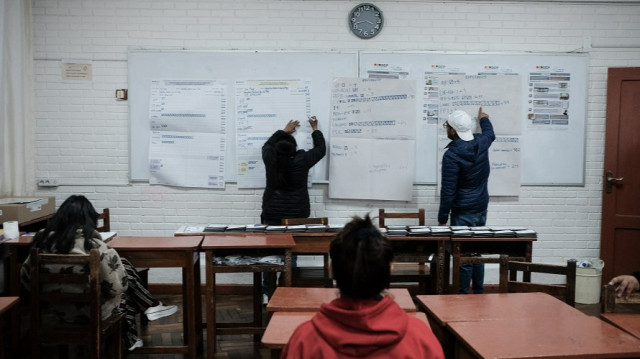
Runoff will determine country's next president after voters reject leftist governing party
Bolivia is heading for a runoff presidential election with centrist Senator Rodrigo Paz and right-wing former President Jorge "Tuto" Quiroga set to face each other following a result that surprised pre-vote polls.
With 90% of the ballots from Sunday's vote tallied, the National Electoral Council (CNE) announced that Paz had secured 31% of the vote while Quiroga came in second with 27%.
Paz, a 57-year-old from the Christian Democratic Party, is a surprise frontrunner. He is the son of former President Jaime Paz Zamora, who ruled from 1989-1993. Born in Spain during his family's exile from 1964 to 1982, Paz's political career began as a lawmaker in 2002. He later served as mayor and governor of his native Tarija region. Paz gained modest notoriety as the campaign progressed.
Jorge “Tuto” Quiroga, 65, of the Alianza Libre coalition is the second contender in the run-off. Quiroga, who has run for president unsuccessfully three times before, previously served as president from 2001 to 2002. He completed the final year of former military dictator Hugo Banzer's term after Banzer resigned due to lung cancer.
“Bolivia told the world that we want to live in a free nation. It's a historic night,” Quiroga said at a public event after the preliminary results were announced.
The polls had widely predicted that Samuel Doria Medina, a 66-year-old center-right businessman, would compete against Quiroga in the second round. However, Medina, who has made three failed presidential bids, came in third. The five other candidates in the race, including leftist Andronico Rodriguez, trailed far behind.
Both candidates leading the race have promised to distance themselves from the state-led economic model imposed by the ruling Movement for Socialism (MAS) party. This model, some Bolivians argue, is the cause of the country’s current economic crisis, which is characterized by a shortage of US dollars, a steady rise in living costs, and prolonged periods of fuel scarcity due to a reliance on imports.
A run-off, widely anticipated because no single candidate won the required majority in the first round, is scheduled for Oct. 19. To win the first round, a candidate needed either more than 50% of the vote or at least 40% with a 10-point lead over the runner-up.
In addition to the president and vice president, voters also voted for 36 senators and 130 deputies.







